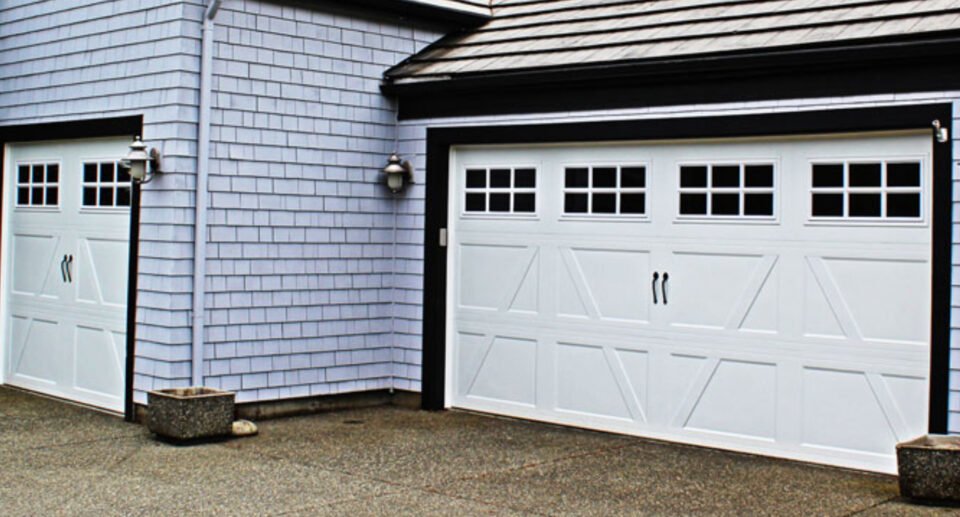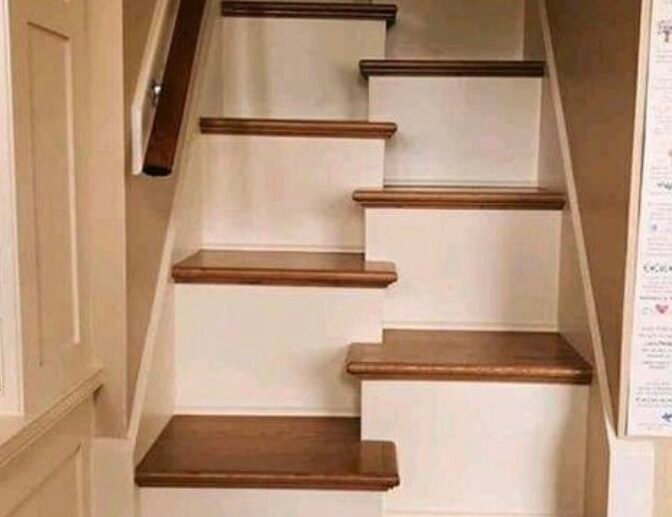Garage Door Insulation – The Complete Guide With Video

Table of Contents
ToggleGarage door insulation is an important consideration for homeowners looking to improve the energy efficiency of their homes.
Insulating a garage door can help to reduce heat loss in the winter and keep the garage cooler in the summer. This results in lower energy bills and a more comfortable living space.
In addition, garage door insulation can help to reduce noise levels, making it a great option for homeowners who use their garages as a workspace or entertainment area.
There are several different types of garage door insulation kits available on the market, each with its own unique benefits and drawbacks.
Understanding the different types of insulation materials and installation processes can help homeowners to choose the right type of insulation for their needs.
Additionally, there are several DIY tips and tricks that homeowners can use to make the installation process easier and more efficient.
Key Takeaways
- Garage door insulation can help to improve the energy efficiency and comfort of a home.
- There are several different types of garage door insulation kits available, each with its own unique benefits and drawbacks.
- Homeowners can use DIY tips and tricks to make the installation process easier and more efficient.
Benefits of Garage Door Insulation
Insulating a garage door can provide numerous benefits to homeowners. These benefits include improved energy efficiency, increased comfort, and reduced noise levels.
Energy Efficiency and Savings
One of the primary benefits of garage door insulation is improved energy efficiency.
Insulated garage doors can help to reduce heat loss during the winter and heat gain during the summer, which can lead to lower energy costs.
According to the US Department of Energy, insulating a garage door can help to reduce energy costs by up to 10%.
This is because insulated garage doors help to keep the garage temperature more stable, which reduces the need for heating and cooling.
Improved Comfort
Insulated garage doors can also help to improve comfort levels in the garage.
By reducing heat loss and heat gain, insulated garage doors can help to maintain a more consistent temperature in the garage. This can make the garage more comfortable to work in, especially during extreme temperatures.
Noise Reduction
Another benefit of garage door insulation is noise reduction.
Insulated garage doors can help to reduce noise levels both inside and outside the garage.
This can be especially beneficial for homeowners who use their garage as a workshop or who have bedrooms located above the garage.
Understanding Insulation Materials
Insulating a garage door is an effective way to maintain a comfortable temperature inside the garage and reduce energy costs.
When it comes to choosing the right insulation material for a garage door, there are several options available. In this section, we will discuss the most common types of insulation materials used for garage doors.
Polystyrene (EPS and XPS)
Polystyrene is a popular insulation material that is commonly used for garage doors.
It comes in two types: expanded polystyrene (EPS) and extruded polystyrene (XPS).
EPS is a lightweight and cost-effective option that is easy to install. Meanwhile, XPS is denser and more durable, making it a better option for high-traffic areas.
Fiberglass Insulation
Fiberglass insulation is another popular option for insulating garage doors.
It is made of tiny glass fibers that are woven together to create a blanket-like material.
Fiberglass insulation is lightweight, easy to install, and provides good thermal insulation.
Polyurethane and Polyisocyanurate
Polyurethane and polyisocyanurate are two types of foam insulation that are commonly used for garage doors.
They are both highly effective at insulating against heat and cold, and they provide excellent sound insulation as well.
Polyurethane is a denser and more durable option, while polyisocyanurate is a lighter and more flexible option.
Reflective Insulation
Reflective insulation is a type of insulation that uses reflective aluminum to reflect heat away from the garage door.
It is commonly used in warmer climates to reduce heat gain in the garage.
Double bubble reflective foil insulation and radiant barriers are two types of reflective insulation that are commonly used for garage doors.
Types of Insulation Kits
When it comes to garage door insulation, there are several types of insulation kits available in the market.
These kits can be broadly classified into three categories: Pre-Cut Panel Kits, Roll-Out Insulation Kits, and Spray Foam Insulation Kits.
Pre-Cut Panel Kits
Pre-Cut Panel Kits are one of the most popular types of garage door insulation kits.
These kits come with pre-cut panels that can be easily installed on the garage door.
The panels are made of different materials, such as polystyrene laminate, expanded polystyrene (EPS), or extruded polystyrene (XPS).
The Reach Barrier Garage Door Insulation Kit is an example of a pre-cut panel kit that uses polystyrene laminate panels.
Roll-Out Insulation Kits
Roll-Out Insulation Kits are another type of garage door insulation kit that is easy to install.
These kits come with rolls of insulation material that can be cut to size and attached to the garage door.
The US Energy Products Double Bubble Reflective Foil Insulation is an example of a roll-out insulation kit that uses reflective foil insulation.
Spray Foam Insulation Kits
Spray Foam Insulation Kits are a more advanced type of garage door insulation kit that uses spray foam insulation.
These kits come with a canister of spray foam insulation that can be sprayed onto the garage door.
The foam expands and fills in all the gaps and cracks in the garage door, providing excellent insulation.
Spray foam insulation kits are more expensive than other types of insulation kits, but they provide the best insulation.
Installation Process
Garage door insulation is a worthwhile investment that can significantly reduce heat transfer and energy costs.
Insulating a garage door can be done in a few simple steps, and with the right tools and materials, it can be completed in a few hours.
This section outlines the installation process, including the tools and materials required, measuring and cutting the insulation, and securing it in place.
Tools and Materials
Before starting the installation process, it is essential to gather all the necessary tools and materials.
The following tools will be required:
- Utility knife
- Squeegee
- Retainer pins
- Weatherstripping
- Bottom seal
- Hinges
- Silicone
The insulation material can be purchased as a kit or in individual sheets. It is essential to ensure that the insulation has an appropriate R-value, which is a measure of its insulating effectiveness. Most insulated garage doors have an R-value of around R-9 to R-11.
Measuring and Cutting
The first step in the installation process is to measure the garage door panels and cut the insulation to size.
The insulation should be cut to fit each panel precisely, leaving a small gap between the panels for flexibility.
It is important to measure each panel individually, as they may vary in size.
To cut the insulation, use a utility knife to score the foam insulation and then snap it along the scored line.
The insulation should be cut slightly larger than the panel to ensure a snug fit. Once the insulation has been cut to size, use a squeegee to smooth out any wrinkles or bubbles.
Securing Insulation
Once the insulation has been cut to size and smoothed out, it can be secured in place.
The insulation should be inserted into the panel with the vinyl side facing into the garage.
Center the insulation on the panel and push it against the retaining pin until it punctures the vinyl facing.
Then, push the retaining cap over the pin until it snaps into place. Repeat until all the panels are insulated.
After securing the insulation, install weatherstripping and a bottom seal to prevent air leaks.
Hinges should also be lubricated to ensure smooth operation. Finally, apply silicone to the edges of the insulation to create a tight seal.
Insulation Effectiveness
Garage door insulation can make a significant difference in the energy efficiency of a home. It can help reduce heat transfer and prevent energy loss through the garage.
The effectiveness of garage door insulation is measured by its R-value, which is the measure of the insulation’s resistance to heat flow.
R-Value Explained
The higher the R-value, the more effective the insulation is at resisting heat transfer.
An R-value of 4 is the minimum recommended for garage door insulation, while an R-value of 8 is considered optimal.
However, it is important to note that the R-value of garage door insulation does not necessarily translate to a corresponding reduction in energy bills.
Other factors such as the size of the garage, the climate, and the homeowner’s energy usage habits can also affect energy efficiency.
Factors Affecting Insulation Performance
Several factors can affect the performance of garage door insulation. These include the type of insulation used, the installation method, and the condition of the garage door itself.
For example, spray foam insulation can be effective at improving the R-value of a garage door, but it may not be the most effective option for all garage doors.
Foam board insulation and cellulose insulation can also be effective options.
In addition to the type of insulation used, the installation method can also affect performance.
Proper installation is critical to ensuring that the insulation is effective at reducing heat transfer and preventing energy loss.
Homeowners should carefully follow the manufacturer’s instructions or hire a professional to install the insulation.
Finally, the condition of the garage door itself can also affect the performance of the insulation.
A poorly insulated garage door with gaps or cracks can allow heat to escape, reducing the effectiveness of the insulation.
Homeowners should ensure that their garage door is in good condition before installing insulation to maximize its effectiveness.
Additional Considerations
Garage Door Types
When it comes to garage door insulation, it’s important to consider the type of garage door you have.
Metal garage doors, for instance, are known to be more energy-efficient than wooden ones. This is because metal is a better insulator than wood, which means it can keep the heat inside the garage better.
Durability and Maintenance
Another important consideration when insulating a garage door is durability and maintenance.
You want to make sure that the insulation you choose is durable enough to withstand the wear and tear of daily use.
Additionally, you’ll want to choose insulation that is easy to maintain and won’t require a lot of upkeep.
Garage Heaters
If you’re planning on using your garage as a workspace or living space, you may want to consider installing a garage heater. A garage heater can help keep your garage warm and comfortable during the winter months.
This can help reduce your energy bills and make your garage a more pleasant place to be.
DIY Tips for Homeowners
Garage door insulation is a simple yet effective way to improve the energy efficiency of your home. With the right insulation kit and proper installation techniques, you can reduce your energy bills and enjoy a more comfortable living space.
Choosing the Right Insulation Kit
When it comes to choosing an insulation kit, there are many options available in the market. Some popular choices include Matador Garage Door Insulation Kit, Owens Corning Garage Door Insulation Kit, and Reach Barrier Garage Door Insulation Kit.
These kits come with all the necessary materials, including insulation panels, adhesive tape, and fasteners.
Before choosing a kit, homeowners should consider the R-value of the insulation. The R-value measures the insulation’s ability to resist heat flow, with a higher R-value indicating better insulation. For most homeowners, an R-value of 8 or higher is recommended.
Installation Best Practices
Once you have chosen the right insulation kit, it’s time to start the installation process. Here are some best practices to follow:
- Clean the garage door thoroughly before installation to ensure proper adhesion of the insulation panels.
- Measure the garage door panels carefully and cut the insulation panels to the correct size.
- Use a straight edge and a utility knife to cut the insulation panels cleanly and accurately.
- Apply the adhesive tape to the edges of the insulation panels to secure them to the garage door.
- Use fasteners to attach the insulation panels to the garage door for added security.
DIYers should also wear protective gear, such as gloves and safety glasses, when handling insulation materials. It’s important to follow the manufacturer’s instructions carefully to ensure a safe and effective installation.
Insulation Upgrades
Insulating your garage door can help to reduce energy costs, increase the comfort of your garage, and protect your belongings from extreme temperatures. There are a few insulation upgrades you can make to your garage door to improve its energy efficiency.
Sealing Gaps and Cracks
One of the easiest ways to improve the energy efficiency of your garage door is to seal any gaps or cracks. Weatherstripping is an effective way to seal gaps around the perimeter of your garage door.
It is available in a variety of materials, including vinyl and rubber. Weatherstripping can be easily installed using adhesive backing, and it helps to prevent drafts and keep out pests.
Another way to seal gaps and cracks is to use foam core insulation. This type of insulation is commonly found in garage door insulation kits and has an R-value of between 3 and 4.
Foam core insulation is easy to install and can be cut to fit the size of your garage door panels. It helps to reduce heat loss and gain through your garage door.
Adding Additional Layers
Adding additional layers of insulation can further improve the energy efficiency of your garage door. Rigid foam insulation is a popular choice for adding additional layers of insulation.
It is more expensive than foam core insulation, but it has a higher R-value of around 5. Rigid foam insulation is also more rigid and won’t absorb water as quickly as foam core insulation.
Before adding additional layers of insulation, make sure your garage door can support the added weight. Adding too much weight to your garage door can cause it to malfunction or even break. It is best to consult a professional before adding additional layers of insulation to your garage door.
Frequently Asked Questions
Choosing the right insulation kit for your garage door depends on various factors such as your budget, climate, and the size of your garage door.
Foam board and reflective insulation are popular options for insulating garage doors. You can also choose insulated garage door panels that come in various thicknesses.
Consider consulting with a professional to help you choose the best insulation kit for your garage door.
Insulating your garage door can help reduce energy costs, improve temperature control, and increase the overall comfort of your garage.
It can also help reduce noise pollution and protect your car and other items stored in the garage from extreme temperatures.
The most effective type of insulation for garage doors is one that has a high R-value. Common insulation materials for garage doors include foam board, reflective insulation, and fiberglass.
Foam board and reflective insulation are great options for those on a budget, while fiberglass insulation is more expensive but offers better insulation.
R-value is a measure of insulation effectiveness, and the higher the R-value, the better the insulation.
When selecting garage door insulation, look for an R-value of at least 6, but ideally, you should aim for an R-value of 10 or higher.
Yes, you can install garage door insulation yourself. Most insulation kits come with installation instructions that are easy to follow.
However, note that installing garage door insulation can be time-consuming and challenging, so be patient and follow the instructions carefully.
You can find professional garage door insulation services by searching online or asking for recommendations from friends and family. Look for companies that have experience in garage door insulation and have positive reviews from previous customers.
Don’t forget to ask for a quote before hiring a professional to ensure that the service fits your budget.

Hello, I’m Keith Jones. I’m the author and head of content here of door and window guide. I’ve been in the window and door industry for over 10 years in the UK and North America. I’ve had quite a few roles during my career mainly in Worldwide sales. I’m now semi retired so I thought I’d put my knowledge to good use educating people about all they might need to know about door and window related topics.






